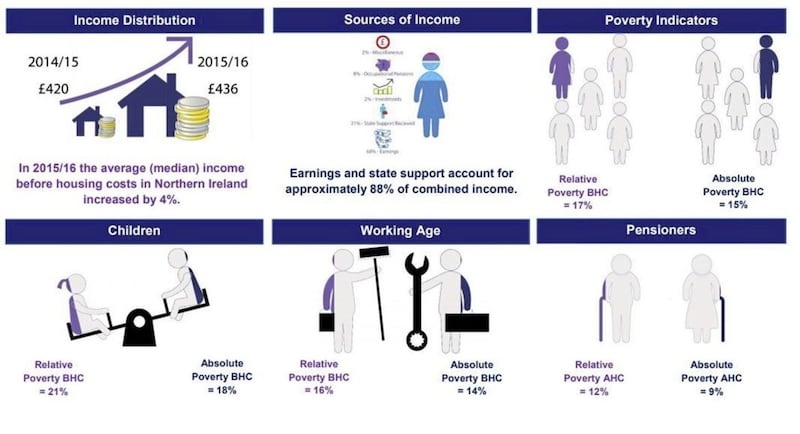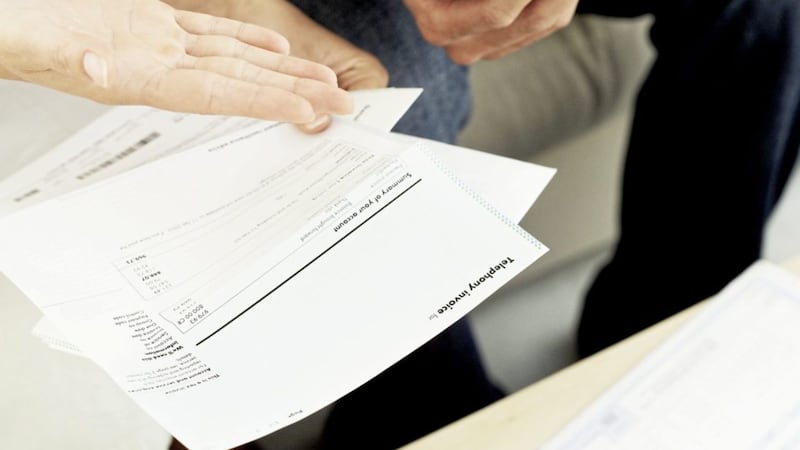AVERAGE household incomes in Northern Ireland are now "very similar" to the highest ever level reached in 2008/09 - before the world banking crisis recession began to bite.
Income inequality in the north has narrowed, according to the `Households Below Average Income' report for 2015-16, which was published yesterday by the Department for Communities.
In 2015-16, the top 20 per cent earning households had a weekly income 3.2 times higher than the bottom 20 per cent, with the so-called `Gini coefficient' falling slightly to 28 per cent.
This compares to 35 per cent across the UK, where income inequality is generally higher.

The survey reveals that, even after housing costs are considered, relative and absolute poverty among pensioners has fallen to the lowest level since figures were first recorded in 2002/03.
It is the first time that overall relative and absolute poverty levels have both seen "statistically significant change" - with both falling to 17 and 15 per cent respectively.
Previously the number of people considered to be living in poverty had "been relatively unchanged from 2002/03".
Also hailed as "statistically significant" is the reduction of the proportion of children in absolute poverty to 18 per cent - down by five percentage points from the previous year to a "historic low".
Meanwhile, children suffering as a result of `low income and material deprivation' (which is measured by whether they can afford to go on school trips or a warm winter coat), fell to nine per cent - the lowest level recorded since the new set of measurements were introduced in 2010/11.
These falls are not reflected in analysis of poverty in Britain.
The decreases in both relative and absolute poverty are attributed to "higher earnings growth in Northern Ireland than in the UK, particularly at the lower end of the earnings distribution", and increases to the personal tax allowance.
The report also notes that increases to the minimum wage "may also have had a bigger impact in Northern Ireland than in the UK as a whole".
Meanwhile, the earlier introduction of 2012 Welfare Reform legislation in Great Britain (in 2013) which led to a fall in benefits payments for many people.
These changes only began to be introduced in Northern Ireland during 2016/17 and therefore are not reflected in the survery.
The report found that the majority of those in relative poverty belong to working families.
There were 173,000 working-age adults in relative poverty - even before housing cost were considered - with 62 per cent in working families and 38 per cent in workless families.
And the long term trend shows that children are at a higher risk of living in poverty than the overall population, with more than three-fifths of children (61 per cent) living in workless households in relative poverty during 2015-16.
Before housing costs the average household income in Northern Ireland was £436 per week or £22,800 per year - a four per cent increase from the previous year.
The survey finds average income is now "very similar to those seen in 2008/09".
Couples without children had the lowest risk of being in relative poverty (12 per cent), while the family type at the highest risk was single with children (33 per cent).



